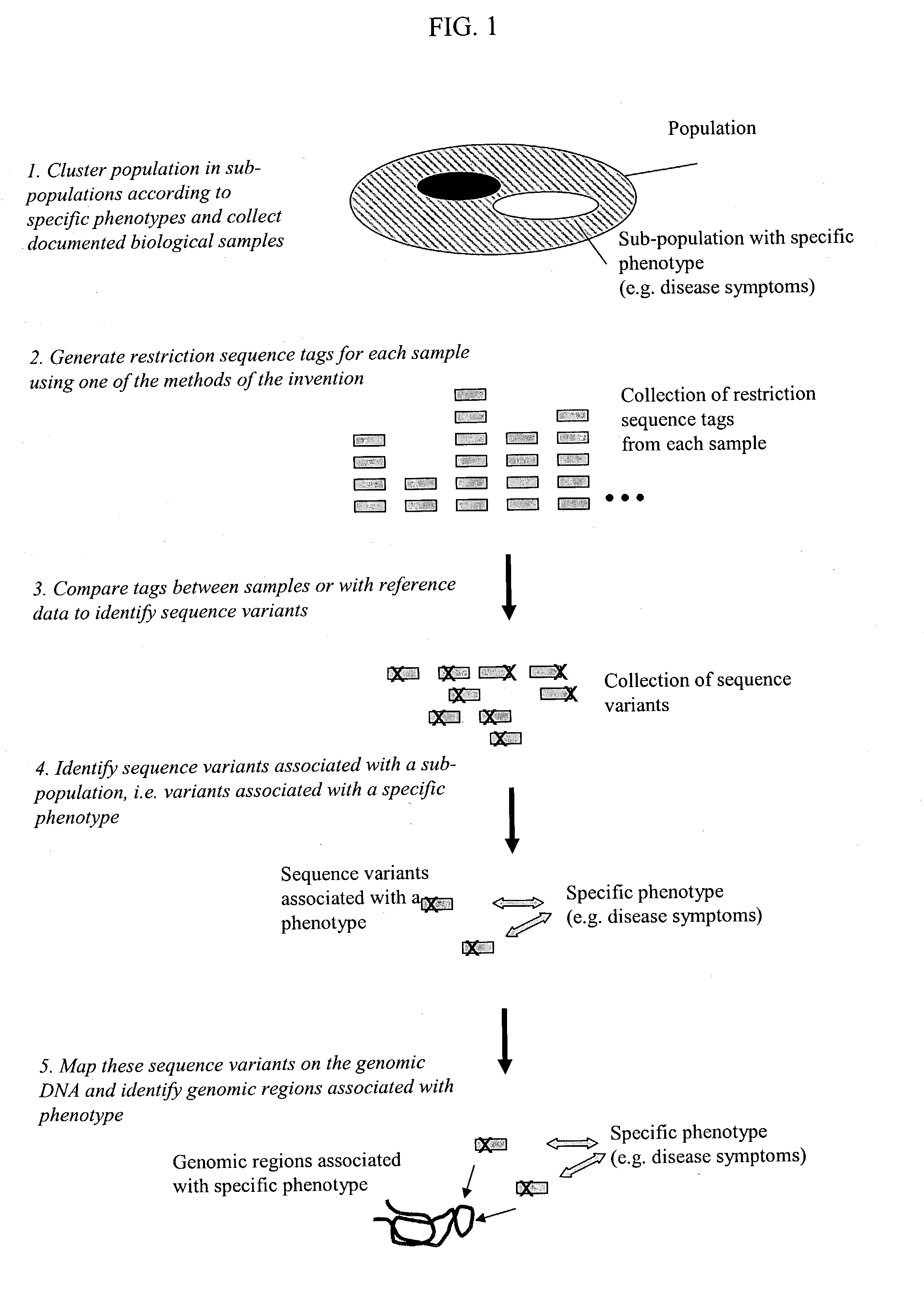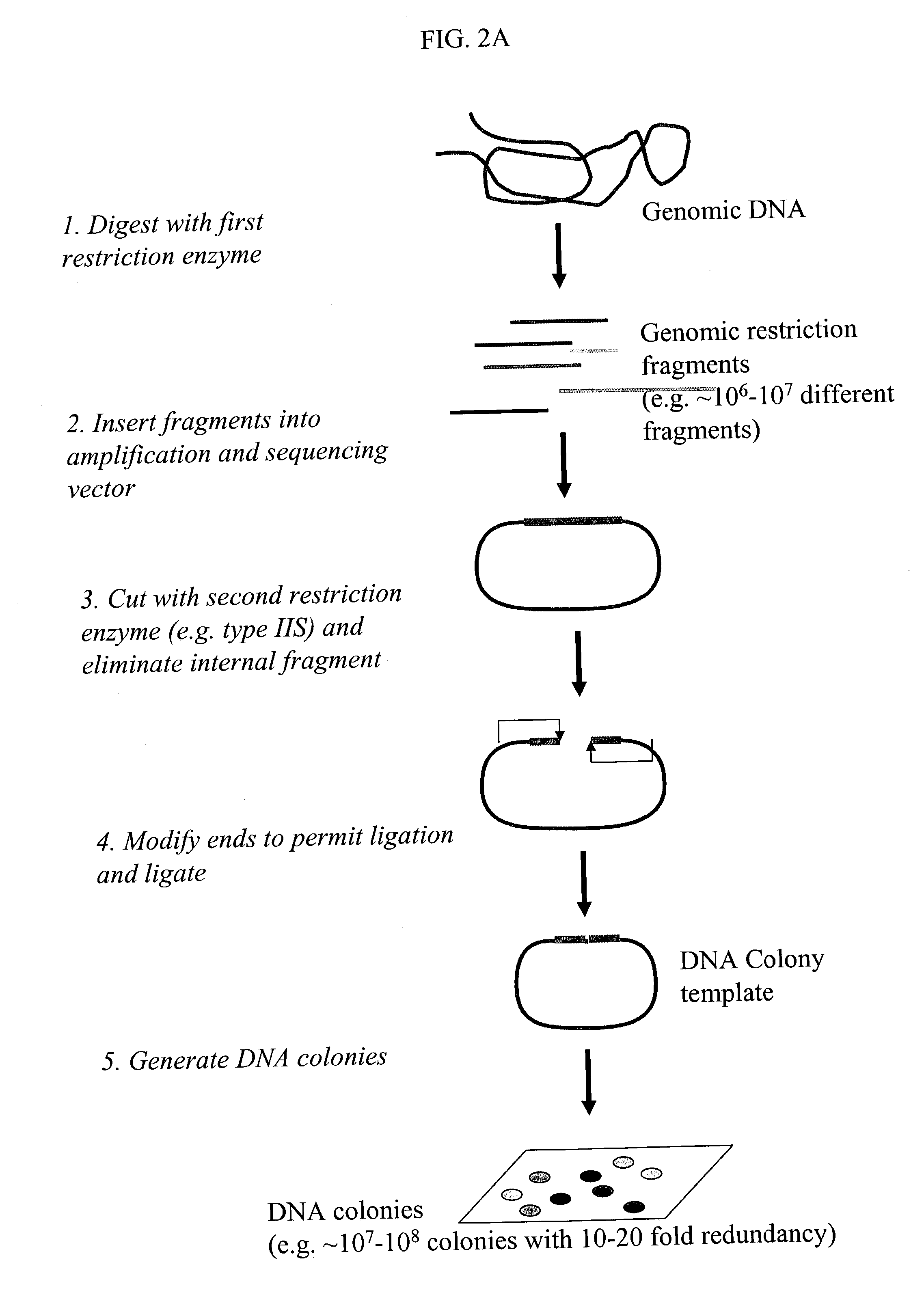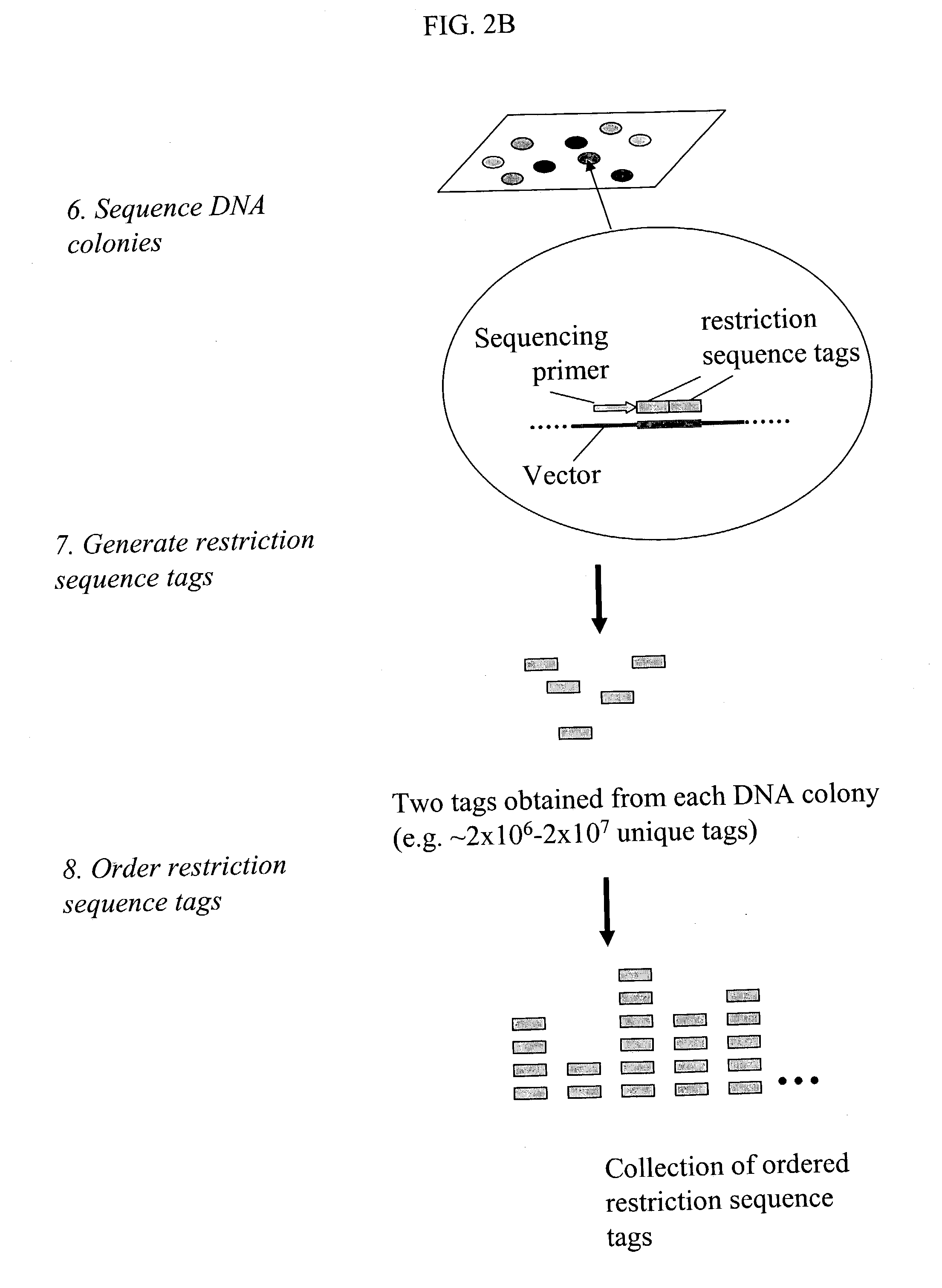Methods for detecting genome-wide sequence variations associated with a phenotype
a genome-wide sequence and phenotype technology, applied in the field of methods for detecting genome-wide sequence variations associated with phenotypes, can solve the problems of requiring sophisticated and expensive robotics, large amount of expensive reactants, and time-consuming and expensive methods
- Summary
- Abstract
- Description
- Claims
- Application Information
AI Technical Summary
Benefits of technology
Problems solved by technology
Method used
Image
Examples
first specific embodiment
[0102] (I) First Specific Embodiment
[0103] In a preferred embodiment, the invention provides a method for generating restriction sequence tags of a biological sample (FIGS. 2A and 2B). In the method, one or more first restriction enzymes are used to digest the nucleic acids extracted from the biological sample to generate a set of restriction fragments. A set of restriction sequence tags is then determined from the set of restriction fragments by a method comprising the step of:
[0104] 1) linking restriction fragments in the set of restriction fragments with a first engineered nucleic acid which comprises a predetermined sequence comprising one or more recognition sites of a second restriction enzyme to obtain a set of first circular nucleic acid fragments, the recognition sites being located and oriented such that the second restriction enzyme cuts in the restriction fragments;
[0105] 2) digesting the first circular nucleic acid fragments with the second restriction enzyme;
[0106] 3) ...
second specific embodiment
[0114] (II) Second Specific Embodiment
[0115] In another embodiment, the invention provides a method for generating restriction sequence tags of a biological sample (FIGS. 3A and 3B). In the method, a first restriction enzyme is used to digest the nucleic acids extracted from the biological sample to generate a set of restriction fragments. The first restriction enzyme cuts at both sides of its recognition site in such a manner that the cutting sites enclose a part of sequence that is not part of the recognition site. Restriction enzymes can be used for this purpose include, but not limited to, BaeI, BcgI, BsaXI. A set of restriction sequence tags is then determined from the set of restriction fragments by a method comprising the step of:
[0116] 1) modifying the ends generated by the first restriction enzyme to permit ligation;
[0117] 2) linking the restriction fragments in the set of restriction fragments with a first engineered nucleic acid to obtain a set of first circular nucleic a...
third specific embodiment
[0122] (III) Third Specific Embodiment
[0123] In still another embodiment, the invention provides a method for generating restriction sequence tags of a biological sample (FIGS. 4A and 4B). In the method, one or more first restriction enzymes are used to digest the nucleic acids extracted from the biological sample to generate a set of restriction fragments. A set of restriction sequence tags is then determined from the set of restriction fragments by a method comprising the step of:
[0124] 1) linking said restriction fragments in the set of restriction fragments with a first engineered nucleic acid to obtain a set of first nucleic acid fragments, the first engineered nucleic acid comprising a predetermined nucleotide sequence comprising a recognition site of a second restriction enzyme, the recognition site being located and oriented such that the second restriction enzyme cuts in the restriction fragments;
[0125] 2) digesting the first nucleic acid fragments with the second restricti...
PUM
| Property | Measurement | Unit |
|---|---|---|
| volume | aaaaa | aaaaa |
| pH | aaaaa | aaaaa |
| temperature | aaaaa | aaaaa |
Abstract
Description
Claims
Application Information
 Login to View More
Login to View More - R&D
- Intellectual Property
- Life Sciences
- Materials
- Tech Scout
- Unparalleled Data Quality
- Higher Quality Content
- 60% Fewer Hallucinations
Browse by: Latest US Patents, China's latest patents, Technical Efficacy Thesaurus, Application Domain, Technology Topic, Popular Technical Reports.
© 2025 PatSnap. All rights reserved.Legal|Privacy policy|Modern Slavery Act Transparency Statement|Sitemap|About US| Contact US: help@patsnap.com



